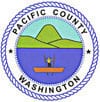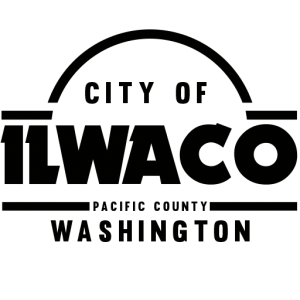Those traveling to the Peninsula via Astoria and Portland have the opportunity to cross the spectacular Astoria-Megler Bridge, just 20 miles from the Long Beach Peninsula. Spanning the mighty Columbia River, the Astoria-Megler Bridge links the Oregon and Washington sections of the Pacific Coast Highway (U.S.101). The bridge stretches 4.1 miles from Astoria, Oregon, across the mouth of the Columbia River to Point Ellice, Washington, and contains the longest continuous three-span through-truss in the world.
When opened on Aug. 27, 1966, the bridge completed U.S. 101 as an unbroken link between the Canadian and Mexican borders.
The story of the Astoria-Megler Bridge is a story of technology. But just as important, it’s a story of people, particularly the people of Astoria. Without their determination, there would be no bridge.
Canoes, Ferries and Automobiles
Astoria’s first settlers quickly found out what the Native Americans who lived in the area had known for centuries: travel across the mouth of the Columbia River is dangerous at best and impossible at times.
The first ferry service between Oregon and Washington began in 1840 when Solomon Smith, Astoria’s first schoolteacher, lashed two canoes together and began carrying passengers and cargo across the river. Ferries of one kind or another served the area intermittently through the turn of the century: Then in 1915, construction crews completed the Columbia River Highway (today U.S. 30), opening a direct overland link between Astoria and Portland.
As the number of motorcars traveling through Astoria increased, so did the demand for a dependable ferry service. Capt. Fritz Elfving established the first commercial ferry service in 1921 when the Tourist I made her maiden voyage.
The state of Oregon purchased Capt. Elfving’s company in 1946 and assigned operational control to the State Highway Department (now the Oregon of Department of Transportation).
Ferry service had serious drawbacks. It was slow (the 4.5-mile long. trip took half an hour in good weather). And since the boats could take only a limited number of vehicles each trip, passengers had a long wait when there was a lot of traffic. To complicate matters, the ferries didn’t run in bad weather, a frequent occurrence during the winter at the mouth of the Columbia River.
Finally, on Sept. 15, 1961, the Oregon and Washington State Highway Commissions signed an agreement to construct the bridge.
1962 – Construction begins
On Aug. 9, 1962, Oregon Gov. Mark O. Hatfield, turned the first shovel of dirt, which marked the official start of the project. (You can see the shovel used for this ceremony at the Clatsop County Historical Society museum on Exchange St.). The actual construction work began on Nov. 5, 1962.
Bridge builders faced unique problems when designing the bridge. They knew the bridge would have to withstand some of nature’s worst attacks. Fierce Pacific storms pacing gusts of winds of 150 miles per hour can batter the Coast during the winter months. The concrete piers would have to withstand a river flood speed of nine miles per hour-powerful enough to sweep whole clumps of trees down the river during floods.
The incredible traveling bridge
Workers cast the concrete foundation piers at Tongue Point, approximately four miles upstream from the construction site. Hollow bell-shaped shells were first cast in concrete, then floated into place, carefully sunk to the river bottom and filled with concrete.
Construction crews built whole sections of the steel superstructure on barges 90 miles upstream in Vancouver, Wash. Tugboats brought the barges to the site and a construction crew carefully lifted the pieces into place with giant hydraulic jacks.
Finally, 1,356 days after construction began, the bridge was ready for its dedication.
Dedication draws thousands
The morning of August 27, 1966 dawned bright and clear in Astoria, much to the relief of the organizers of the dedication ceremony. Steady rain and blustery winds had pummeled the city for two days. Organizers were afraid they’d have to move the ceremony inside. But the weather cleared and at 2 p.m., Govs. Mark O. Hatfield of Oregon and Dan Evans of Washington Cut a ribbon to open the toll gate and the bridge officially opened to traffic.
More than 30,000 people watched the dedication. The Spokane, Portland and Seattle Railroad ran a special passenger train from Portland to the foot of the bridge for the event. A long queue of cars lined up on the approaches of the bridge for a free trip to the Washington side. And the R. W. Chesman, the last of me Astoria ferryboats, provided free rides on its last day of service.
The toll comes tumbling down
The original agreement between Oregon and Washington called for a toll to pay for the Astoria-Megler Bridge over a 30-year period. Critics predicted “The Bridge To Nowhere” would never pay for itself. They said it would “drain the pocketbooks of Oregon and Washington taxpayers for decades to come.”
That first year, 206,216 vehicles crossed the bridge. By 1993, more than 1.6 million vehicles a year were crossing the bridge. And on Dec. 24, 1993 – more than two years early -the bonds were paid off and the toll removed.
Astoria’s “bridge to the world”
Today about 6,000 cars a day cross the Astoria Megler Bridge and U.S. 101 is unbroken between the Canadian and Mexican borders. Astoria’s “Bridge to Nowhere” has become the city’s “Bridge to the World”
Source: The Oregon of Department of Transportation, who gratefully acknowledges the invaluable help of the Clatsop County Historical Society in producing this material.





